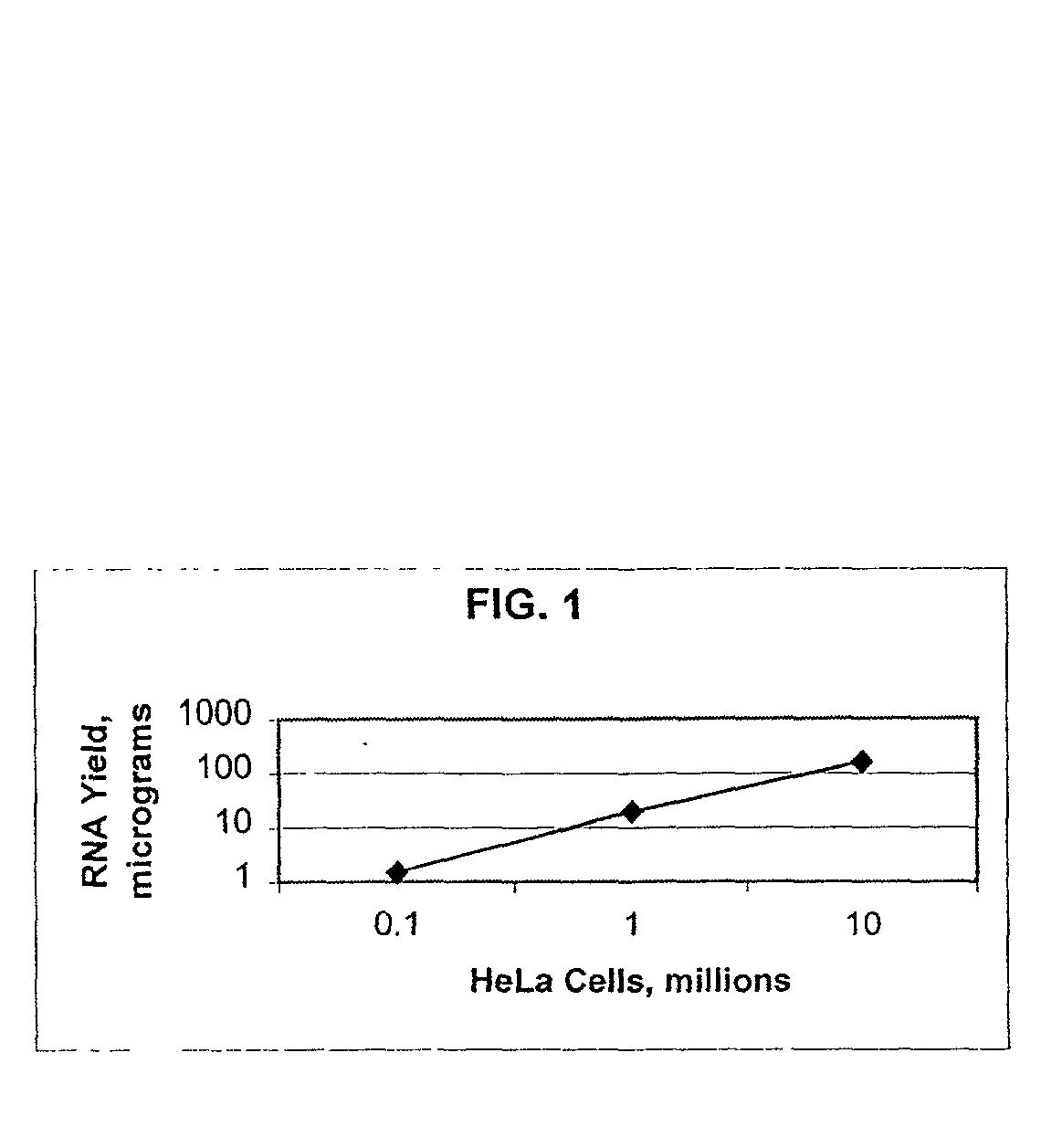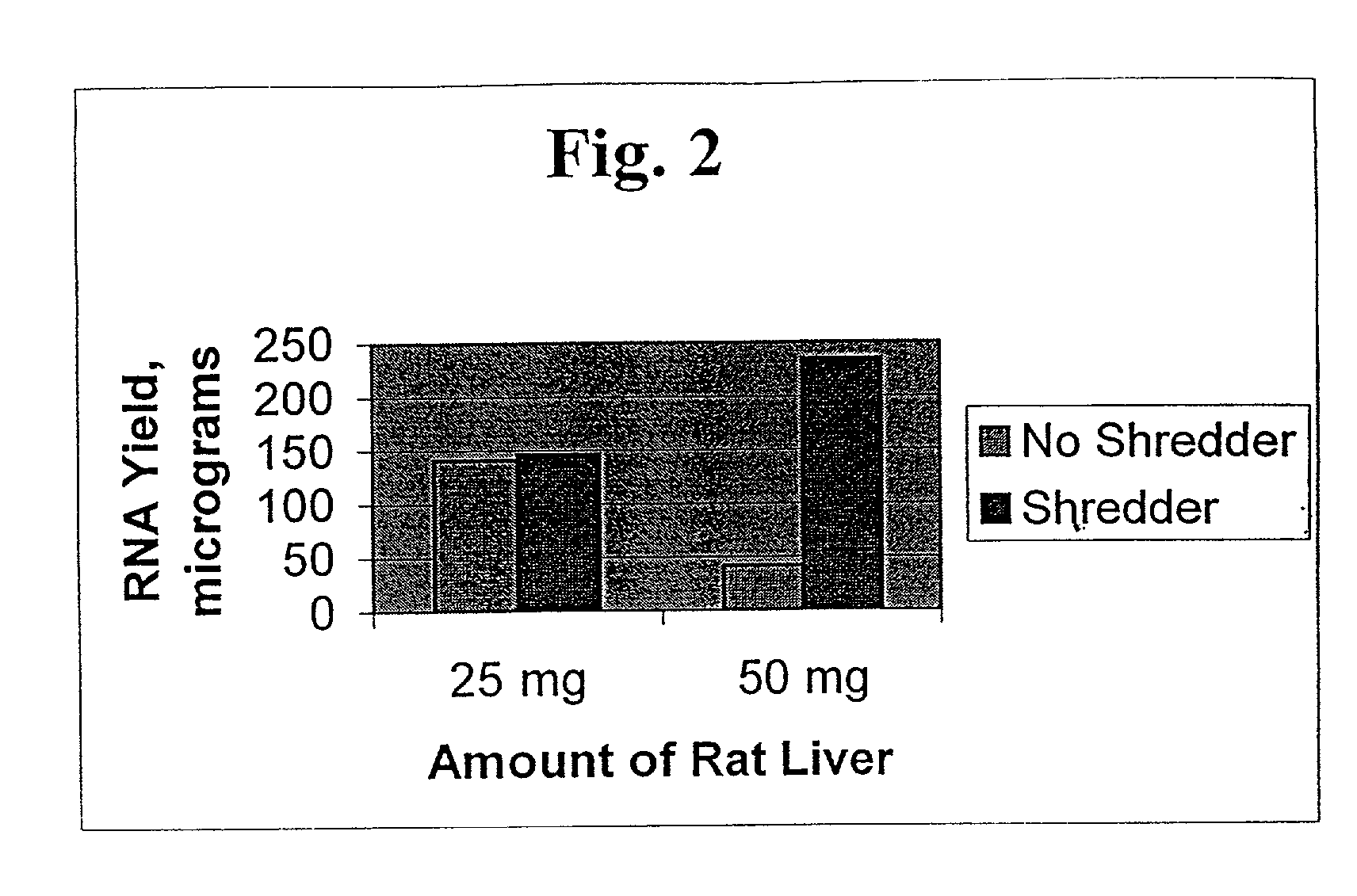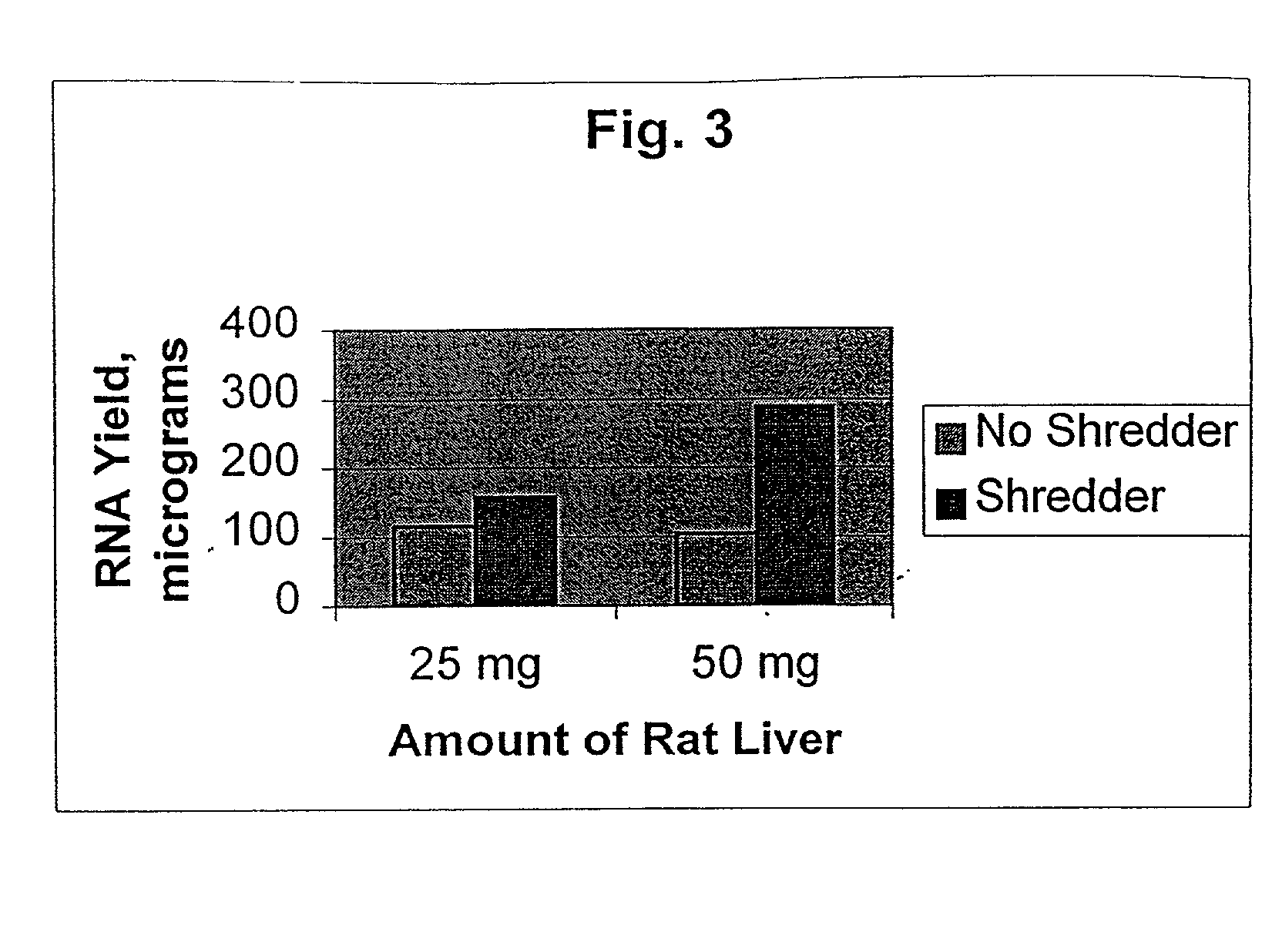Methods and compositions for isolation of biological macromolecules
a biological macromolecule and composition technology, applied in the field of molecular biology, biochemistry and genetics, can solve the problems of compromising the subsequent yield and purity of the isolated biological macromolecules, unsafe needle use of samples, contamination of samples from sample to sample, etc., and achieve the effect of sufficient size and sufficient siz
- Summary
- Abstract
- Description
- Claims
- Application Information
AI Technical Summary
Problems solved by technology
Method used
Image
Examples
example 1
Animal or Plant Cells
[0081] HeLa cells (up to 1.times.10.sup.7 cells) were disrupted in 0.6 ml of guanidinium isothiocyanate lysis buffer (4 M guanidinium isothiocyanate, 50 mM Tris HCl, pH 7.5, 25 mM EDTA), transferred to the filter of the invention. This embodiment of the invention comprises a first regenerated cellulose layer, 6.9 mm in diameter, with a pore size of 0.2 .mu.m; and a second high density polyethylene layer, 7.3 mm in diameter and 1 / 8 inch thick (comprising two {fraction (1 / 16)} inch thick frits), with a 20 .mu.m pore size. The filter is contained in a 3 cm long conical housing, 1.3 cm in diameter at the top, tapering to 0.4 cm at the bottom. This housing was then placed in a 2-ml conical centrifuge tube, and centrifuged for two minutes. The filter of the invention was removed, and an equal volume of 70% ethanol was added to the flow-through. The sample was mixed and transferred to a glass fiber RNA-binding cartridge contained in a 2-ml tube. The sample was centrifu...
example 2
Animal Tissues
[0082] Rat liver, brain or spleen (1 mg to 60 mg) was disrupted in 0.3-0.6 ml of guanidinium isothiocyanate lysis buffer, transferred to the filter of the invention (as described in Example 1), contained in a 2-ml conical centrifuge tube, and centrifuged for two minutes. The filter was removed, and an equal volume of 70% ethanol was added to the flow-through. The sample was mixed and transferred to a glass fiber RNA-binding cartridge contained in a 2-ml tube. The sample was centrifuged, the RNA-binding cartridge was washed several times. The RNA was eluted from the cartridge with water. As shown in FIGS. 2 and 3, the RNA yield when the composition of the invention is used is significantly higher than when the composition of the invention is not used. This is particularly true when RNA is isolated from larger amounts of tissue (50 mg).
example 3
Animal Tissues
[0083] Rat liver, brain or spleen (>60 mg to 100 mg) was disrupted in 1.2 ml of guanidinium isothiocyanate lysis buffer. The lysate was divided into aliquots and each aliquot was transferred to the filter of the invention (as described in Example 1), contained in a 2-ml conical centrifuge tube, and centrifuged for two minutes. The flow-through was re-applied to the filter and centrifuged for 2 minutes. The filters of the invention were removed, the two aliquots were combined in a 15-ml conical tube, and an equal volume of 70% ethanol was added, the sample was vortexed for 2 minutes at high speed, and aliquots were processed on an RNA-binding cartridge contained in a 2-ml tube. The RNA-binding cartridge was washed several times and the RNA was eluted from the cartridge with water. (FIG. 4)
PUM
| Property | Measurement | Unit |
|---|---|---|
| pore size | aaaaa | aaaaa |
| pore size | aaaaa | aaaaa |
| pore size | aaaaa | aaaaa |
Abstract
Description
Claims
Application Information
 Login to View More
Login to View More - R&D
- Intellectual Property
- Life Sciences
- Materials
- Tech Scout
- Unparalleled Data Quality
- Higher Quality Content
- 60% Fewer Hallucinations
Browse by: Latest US Patents, China's latest patents, Technical Efficacy Thesaurus, Application Domain, Technology Topic, Popular Technical Reports.
© 2025 PatSnap. All rights reserved.Legal|Privacy policy|Modern Slavery Act Transparency Statement|Sitemap|About US| Contact US: help@patsnap.com



